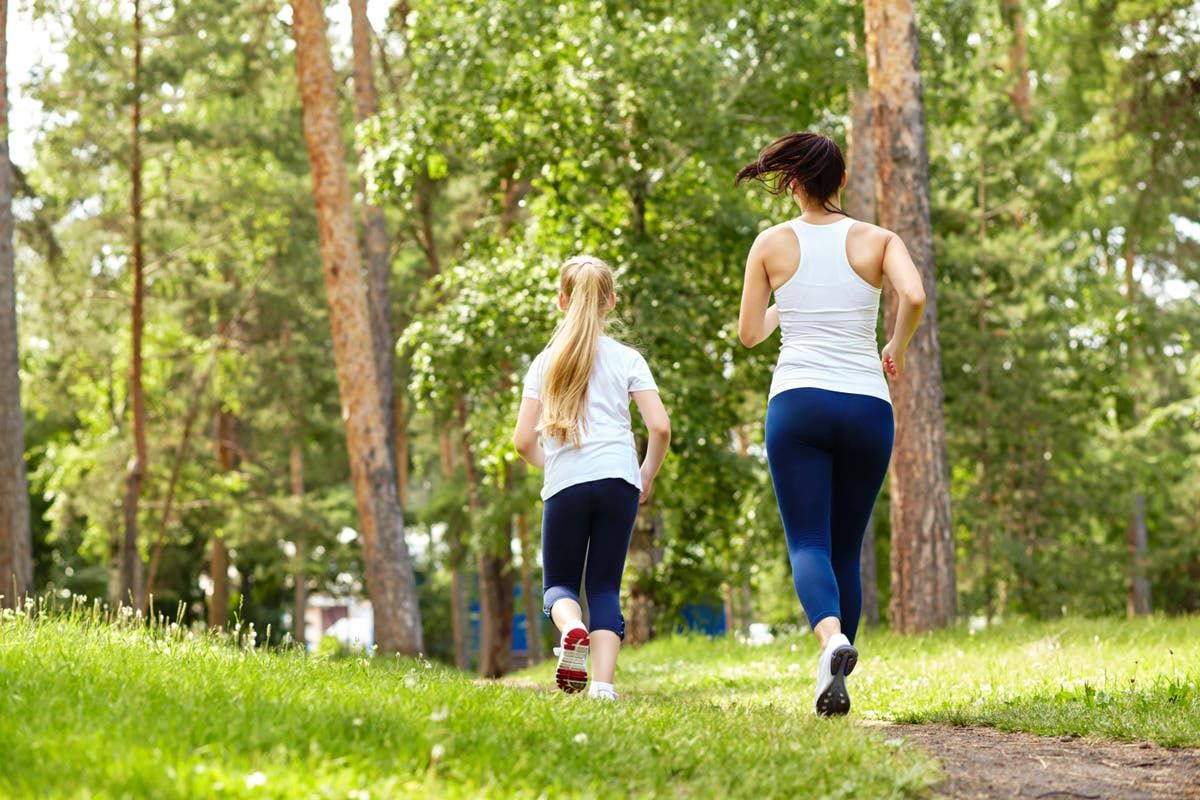Finding time to move your body seems increasingly difficult.
We understand, more than ever, why it is so important. We know it helps our brains as much as it helps our bodies, but we're so overloaded in all areas of life that when you have a free hour on the weekend, it can be difficult to prioritize exercise over rest.
Add kids to the mix (school runs, parties, clubs, homework, family visits, lack of motivation) and it will feel even harder. However, it is actually those children who really need to move their bodies. Yes, we can talk (if we have to) about the rise in overweight and obesity in children, but more importantly, it's their delicate post-pandemic brains that really need the power of those post-exercise endorphins.
“I think we're all probably a little more sedentary now, for a variety of reasons,” says fitness expert Laura Williams. “There are more indoor places where young people can socialize, particularly cafes and other food establishments. And the number of activities we can do at home has also increased: time can be spent on devices in many ways, whether it's gaming, social media or TV streaming services. In the past, with only a handful of terrestrial channels, there wasn't half as much to do with downtime at home.
“And young people today have more homework? It is easy to forget that most homework must be done sitting and that most of the time at school is spent sitting.”
So how can you get kids started on a fitness journey and encourage them to pursue it?
Be the role model
It doesn't take a genius to know that our children will follow who we are as a role model. So, if you see us outside, prioritizing exercise, it will seem very normal and everyday to you. And similarly, if they see us lying on the couch, phones stuck in our hands, complaining that we need to exercise, kids will learn that staying fit is a chore.
“Positive role models are key to encouraging children to be active, something parents can get involved in,” says Andy Farr, strategic director at leisure facility operator Parkwood Leisure. “Normalizing physical activity within families and groups of friends is really important if we want to avoid fear of failure or embarrassment. As a father of two daughters, ages nine and 11, we see the impact the environment has on their activity levels: creating informal opportunities that are fun, interesting and social makes a significant difference in the activity level of them and their friends.” .
Williams agrees that getting involved is key to promoting fitness: “Combining sports activities with leisure activities can help create a complete and fun experience. A family run, bike ride or swimming session can be combined with a trip to the cinema or a visit to the local coffee shop.”
He suggests finding out what is offered locally. “Some of the best grassroots sports clubs and community organizations don't have the budget for much advertising and promotion, but there is likely to be a wide range of good quality activities and services available.”
Getting toddlers moving
When children are young, it's easy to make sure they are active. Once on their feet, running is a total pleasure and they put all their energy into any type of physical activity.
“Keep it simple and fun, like playing with balloons, a bouncy ball, creating obstacle courses in the yard using items you have around the house, taking short walks, and then playing in the park,” suggests Kelly Cooper, children's director. at David Lloyd clubs. “A 'fetch and seek walk' where children have to spot things in their path may also be a good idea.”
It's also a time when you can start exploring clubs (gymnastics, soccer, ballet), when everything is new, exciting, and kids will want to participate.
adolescence exercise
Once children reach adolescence, things can get more complicated. If they are good at a sport and enjoy it, they will be keen to continue doing it, and some gyms offer fun sessions for under 10s. But as high school begins and life becomes a little more full, keeping your kids moving can be difficult.
“Participating in running and walking at Junior Parkrun and joining parents at the Couch To 5k can provide options to be active as a family,” recommends Farr.
And Cooper adds: “Encourage kids to choose a sport they like and join a team; This will offer them regular exercise and help them develop many of the other social skills they will need. “It also gives children a sense of belonging and builds a social circle outside of school.”
If all else fails and you have some money to spare, some gym memberships offer solutions for this age group. David Lloyd clubs, for example, have limited fitness classes for people aged 10 to 14, but they can use the gym there, once they have had an induction. Other places, such as Better leisure centres, require children to be 11 before they can use the equipment, but it's definitely worth investigating – going to the gym often has a lot of appeal, because it can seem like a 'grown-up' thing to do.
Staying in shape once children reach adolescence
Friendship is key once children become teenagers, so any club they attend with their friends will probably be a hit, although they may focus less on physical activity.
And because teenagers need so much energy to grow their brains and bodies, they become much more tired and less engaged with almost everything.
Again, going to the gym is a good option here or asking about local classes, both inside and outside the gym. Anything that you can do with friends and/or family, and that makes you feel good, is worth trying.
If money is no object, personal training can be fantastic. Someone (non-parent) setting goals and pushing kids can do wonders. And some PTs also offer family sessions, which can be fun.
If they like technology and it hasn't stopped them from exercising at home during lockdown, there are plenty of free workout sessions available online. Additionally, it's worth investigating memberships like Les Mills On Demand, which streams a host of brilliant classes for all ages and abilities, as well as apps like mvmnt, which works with Sky Live and uses built-in body tracking technology to correct your form. when doing any of the interactive workouts.
Return to basic
Ultimately, it's about prioritizing movement for the entire family.
Without following an intense plan (and feeling motivated enough to do so), busy lives mean it's harder to fit in the activity. And that applies to all of us, young and old. But taking some time on the weekend to plan for next week can be a big help.
But keep it realistic. If next week you spend all your free time rushing to new classes and sweating at the gym, you may find it all too much and you won't want to go next week. Start small, try a new class or activity each week, and if you like it, keep going.
And if all else fails, there's always the kitchen disco on Friday nights. Let the kids invite their friends, turn up the volume, and throw a little party. Every movement counts.












